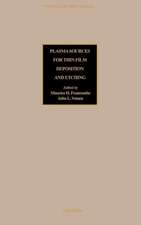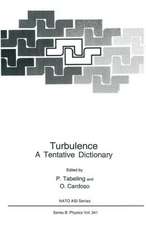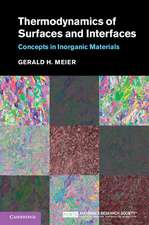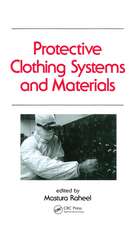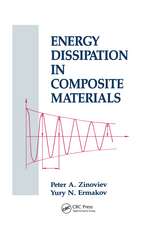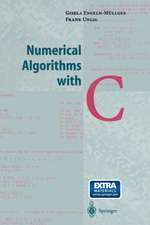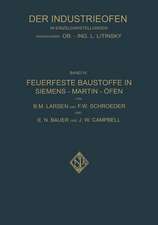Biological Insulating Liquids: New Insulating Liquids for High Voltage Engineering
Autor Ernst Peter Pagger, Norasage Pattanadech, Frank Uhlig, Michael Muhren Limba Engleză Hardback – 2 mar 2023
| Toate formatele și edițiile | Preț | Express |
|---|---|---|
| Paperback (1) | 578.45 lei 38-44 zile | |
| Springer International Publishing – 3 mar 2024 | 578.45 lei 38-44 zile | |
| Hardback (1) | 792.04 lei 38-44 zile | |
| Springer International Publishing – 2 mar 2023 | 792.04 lei 38-44 zile |
Preț: 792.04 lei
Preț vechi: 1028.61 lei
-23% Nou
Puncte Express: 1188
Preț estimativ în valută:
151.55€ • 158.66$ • 125.40£
151.55€ • 158.66$ • 125.40£
Carte tipărită la comandă
Livrare economică 02-08 aprilie
Preluare comenzi: 021 569.72.76
Specificații
ISBN-13: 9783031224591
ISBN-10: 3031224590
Pagini: 322
Ilustrații: X, 322 p. 232 illus., 153 illus. in color.
Dimensiuni: 155 x 235 mm
Greutate: 0.7 kg
Ediția:2023
Editura: Springer International Publishing
Colecția Springer
Locul publicării:Cham, Switzerland
ISBN-10: 3031224590
Pagini: 322
Ilustrații: X, 322 p. 232 illus., 153 illus. in color.
Dimensiuni: 155 x 235 mm
Greutate: 0.7 kg
Ediția:2023
Editura: Springer International Publishing
Colecția Springer
Locul publicării:Cham, Switzerland
Cuprins
1.Introduction.- 2.Dielectric Insulating Liquids.- 3.Production process.- 4.Properties.- 5.Application.- 6.Research.- 7.Standardization.- 8.onclusion.
Notă biografică
Pagger studied Chemical Engineering and completed his Ph.D. at the Institute of High Voltage Engineering and System Management, Graz University of Technology, Austria. His Ph.D. thesis compared alternative insulating liquids with mineral oil. He is the managing director of EPP Consulting GmbH. He has been involved in power plant technology for more than 40 years and has contributed his experience as a consultant, too. He has published several papers regarding alternative insulating liquids. He joined several Cigré WGs. Currently, he is a member of Austrian’s technical committee for liquid and gaseous insulating materials.
Textul de pe ultima copertă
This book describes the state-of-the-art use of biological insulating liquids in detail. In recent years, more and more transformers filled with esters have been put into operation. This is because people recognize the benefits of ester liquids in terms of their fire safety (high flash and fire points) and environmental characteristics, judging from their biodegradability, their low CO2 footprint (only valid for natural ester) and their beneficial interactions with solid insulation, etc. One of the main reasons is that the water adsorption and absorption characteristics of these liquids are excellent and very different compared to mineral oil. The today’s discussion about climate change and global warming is an additional driver for using natural ester. Another advantage is that transformers filled with biological insulating liquids can operate with an overload of up to 150%. This is advantageous in the case of volatile energy generation from wind and solar power and in the supply of electrical energy for electromobility. Liquid inside electrical equipment is the lifeblood that serves both as a dielectric and a cooling medium. Some properties of these liquids differ from mineral oil, which had to be considered in the transformer design. The dielectric liquid is always in direct contact with transformer materials; therefore, the interaction should be very well understood, especially when retrofilling an existing mineral oil filled device. There are several natural ester fluids derived from various seeds and fruits on the market, and their properties may differ more or less. In the book, the most important properties of the different biological insulating fluids and mineral oil are compared. Ester fluids have already found their way into various standards. The condition of the device can be verified very well from the contents of the insulating liquids. For analysis and testing, the same equipment and devices that are commonly used for mineral oilare used for ester liquid. The chemical and physical behaviors of ester fluids compared to mineral oil are different. This must always be considered when interpreting test results stemming from ester fluids. The book is a guideline for students, original equipment manufacturers, users, laboratories and authorities in the use of biological insulating liquids.
Caracteristici
Reviews the biological insulating liquids used and currently being researched Compares the alternative insulating liquids with the classic mineral oil Shows how biological liquids affect the transformer design and the diagnosis/interpretation of test results

